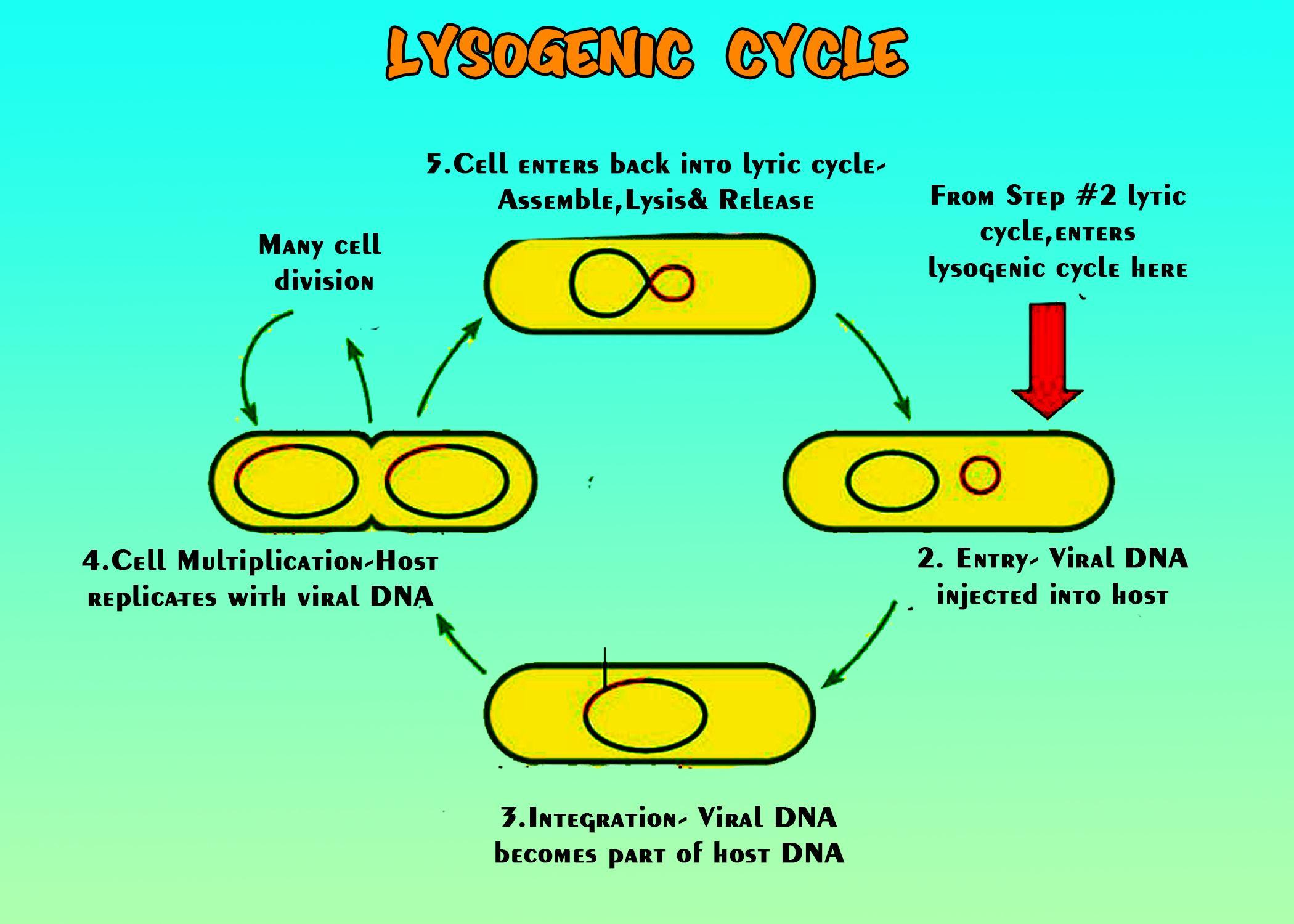
Phages that show lysogenic cycle is called
(a) Temperate phages
(b) Virulent phages
(c) Avirulent phages
(d) Lytic phages
Answer
479.7k+ views
Hint: One of two stages of viral replication (the lytic cycle is the other) is Lysogeny or the lysogenic cycle. Lysogeny is characterized by bacteriophage nucleic acid integration into the genome of the host bacterium or the development of a circular replicon in the cytoplasm of the bacteria. The bacterium continues to survive and multiply normally in this state.
Complete answer:
Some bacteriophages which exhibit a lysogenic life cycle are temperate phages. Lysogeny is characterized by the incorporation into the genome of the host bacteria of the bacteriophage nucleic acid and becomes a prophage. The bacterium continues to survive and multiply normally in this state. Virulent phages are called bacteriophages that only use the lytic cycle. So,' Temperate Phages' is the right answer.

At each subsequent cell division, the genetic material of the bacteriophage, called a prophage, can be transferred to daughter cells, and at subsequent events (such as UV radiation or the presence of certain chemicals) it can be released, allowing new phages to proliferate via the lytic cycle. In eukaryotes, lysogenic cycles can also occur, although the DNA incorporation method is not completely understood.
Additional information: The distinction between lysogenic and lytic cycles is that the propagation of the viral DNA occurs by normal prokaryotic replication in lysogenic cycles, while a lytic cycle is more immediate in that it results in the very rapid development of several copies of the virus and the destruction of the cell. One key distinction between the lytic cycle and the lysogenic cycle is that the host cell is not lysed directly by the lysogenic cycle. Phages that reproduce only via the lytic cycle are referred to as virulent phages, whereas phages that reproduce are referred to as temperate phages using both lytic and lysogenic cycles.
So, the correct answer is ‘(a) Temperate phages’.
Note: The phage DNA incorporates first into the bacterial chromosome in the lysogenic cycle to create the prophage. The prophagus is often copied as the bacterium reproduces and is present in each of the daughter cells. With the prophage present, the daughter cells may continue to replicate or the prophage can exit the bacterial chromosome to begin the lytic cycle. The host DNA is not hydrolyzed in the lysogenic cycle, but the host DNA in the lytic process is hydrolyzed in the lytic cycle.
Complete answer:
Some bacteriophages which exhibit a lysogenic life cycle are temperate phages. Lysogeny is characterized by the incorporation into the genome of the host bacteria of the bacteriophage nucleic acid and becomes a prophage. The bacterium continues to survive and multiply normally in this state. Virulent phages are called bacteriophages that only use the lytic cycle. So,' Temperate Phages' is the right answer.

At each subsequent cell division, the genetic material of the bacteriophage, called a prophage, can be transferred to daughter cells, and at subsequent events (such as UV radiation or the presence of certain chemicals) it can be released, allowing new phages to proliferate via the lytic cycle. In eukaryotes, lysogenic cycles can also occur, although the DNA incorporation method is not completely understood.
Additional information: The distinction between lysogenic and lytic cycles is that the propagation of the viral DNA occurs by normal prokaryotic replication in lysogenic cycles, while a lytic cycle is more immediate in that it results in the very rapid development of several copies of the virus and the destruction of the cell. One key distinction between the lytic cycle and the lysogenic cycle is that the host cell is not lysed directly by the lysogenic cycle. Phages that reproduce only via the lytic cycle are referred to as virulent phages, whereas phages that reproduce are referred to as temperate phages using both lytic and lysogenic cycles.
So, the correct answer is ‘(a) Temperate phages’.
Note: The phage DNA incorporates first into the bacterial chromosome in the lysogenic cycle to create the prophage. The prophagus is often copied as the bacterium reproduces and is present in each of the daughter cells. With the prophage present, the daughter cells may continue to replicate or the prophage can exit the bacterial chromosome to begin the lytic cycle. The host DNA is not hydrolyzed in the lysogenic cycle, but the host DNA in the lytic process is hydrolyzed in the lytic cycle.
Latest Vedantu courses for you
Grade 11 Science PCM | CBSE | SCHOOL | English
CBSE (2025-26)
School Full course for CBSE students
₹41,848 per year
Recently Updated Pages
Master Class 12 Business Studies: Engaging Questions & Answers for Success

Master Class 12 English: Engaging Questions & Answers for Success

Master Class 12 Social Science: Engaging Questions & Answers for Success

Master Class 12 Chemistry: Engaging Questions & Answers for Success

Class 12 Question and Answer - Your Ultimate Solutions Guide

Master Class 11 Economics: Engaging Questions & Answers for Success

Trending doubts
Draw a labelled sketch of the human eye class 12 physics CBSE

a Tabulate the differences in the characteristics of class 12 chemistry CBSE

Which one of the following is a true fish A Jellyfish class 12 biology CBSE

Why is the cell called the structural and functional class 12 biology CBSE

Differentiate between homogeneous and heterogeneous class 12 chemistry CBSE

Write the difference between solid liquid and gas class 12 chemistry CBSE




